The ritzy resorts of the Maldives, each perched on its own atoll, have left most islanders out of the tourism equation. Shannon McCarthy and Chloe King describe how a community-based guesthouse model may change things. Their first problem was how to convince the community.
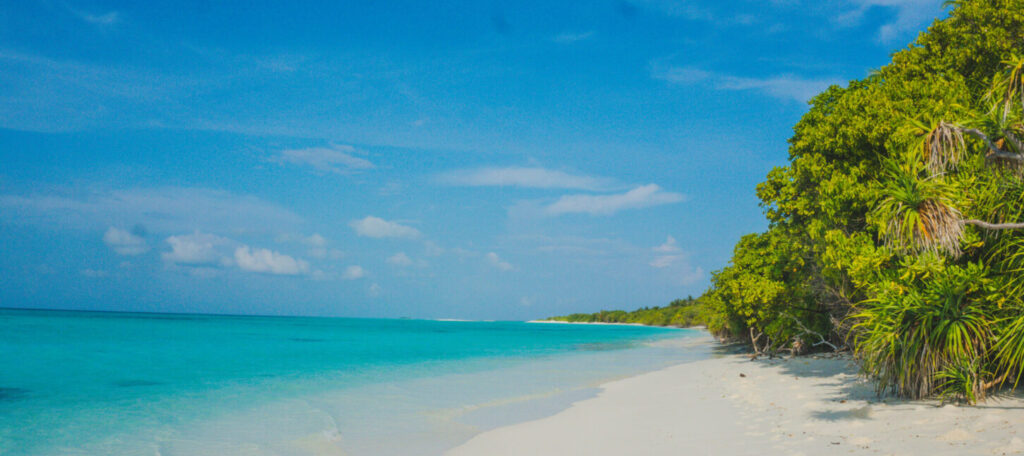
One resort per atoll did little for Maldive islanders. Was there another way?
For many, the Maldives is the ultimate tropical paradise with clear turquoise waters, white-sand beaches, swaying palm trees, and abundant marine life. In 2023, the Ministry of Tourism reported 1.88 million tourist arrivals, a 12.6% increase from 2022’s 1.67 million. However, while tourism remains the backbone of the Maldives’ economy, the benefits are not always reaching the local communities.
Since the 1970s, the Maldives has primarily adhered to the “one island, one resort” model, targeting foreign operators and tourists seeking luxury. Resorts continue to dominate the accommodation space, accounting for more than 71% of total bed capacity in 2020. Reporting by the World Bank (2015) notes that the “one island, one resort” model lacks inclusivity and threatens social, environmental, and fiscal sustainability due to the unequal and unshared benefits of the tourism industry.
In comparison, guesthouse tourism, which has grown in popularity since its introduction in 2009, currently accounts for 19% of total bed capacity with 638 registered guesthouses in 2020, mainly on local inhabited islands (Sharmeela et al., 2021). These small-scale, family-owned accommodations provide culturally immersive experiences for various travelers and promise more benefits to local communities.
The Horsburgh Atoll, also known as the Goidhoo Atoll, is a sub-atoll within the Baa Atoll, is known for its UNESCO Biosphere Reserve. The Horsburgh Atoll includes the islands of Goidhoo, Fehendhoo, and Fulhadhoo, with populations of approximately 835, 318, and 391, respectively. Goidhoo, the largest island, thrives on agriculture, including watermelon farming, fishing, rope making, and thatch weaving. Fehendhoo and Fulhadhoo rely mainly on fisheries. The tourism economy in Horsburgh Atoll is growing, with 17 registered guesthouses and an increasing number of restaurants and tour operators.
Creating the Horsburgh Atoll Tourism Alliance: A New Vision for Tourism in the Maldives
During the COVID-19 pandemic, the Maldivian government allowed foreign resort owners to accept tourists but indefinitely delayed the reopening of local guesthouses. In response, tourism business owners in Horsburgh Atoll organized. When the Ministry of Tourism permitted the slow reopening of guesthouses starting October 15th, 2020, the informal coalition called the Horsburgh Atoll Tourism Alliance (HATA) saw smaller communities reopening while theirs remained closed. A founding member stated, “We were in a great loss at the time, so we gathered and fought for this right.” HATA won the right to reopen their guesthouses.
Following their victory, the founding members of HATA set their eyes on their next goal: developing a tourism model that prioritizes community resilience and promotes environmental stewardship. They began collaborating on managing and marketing the destination, establishing HATA as the first community-led Destination Management Organization in the Maldives. In January of 2023, the USAID Climate Adaptation Project and Solimar International began supporting this initiative as an avenue for strengthening destination resilience in the face of climate adaptation challenges.
DMO as Community Cooperative
Though the support of USAID and Solimar, and the help of HATA Coordinator Rayya Hussain, HATA has structured their organization in an innovative way – as a cooperative, whereby community members have voting rights in the organization and receive dividends from future tourism development.
Additionally, as explained below, HATA’s collaboration with these international development organizations has yielded a sustainable-tourism plan that entails strategies to ensure that tourism in the atoll contributes positively to both the preservation of natural resources and the well-being of its inhabitants.
While this first-of-its-kind initiative is still in its early stages, the lessons learned so far can be instructive for other destinations around the world seeking to decentralize the management of tourism and ensure local stakeholders can meaningfully shape its future development.
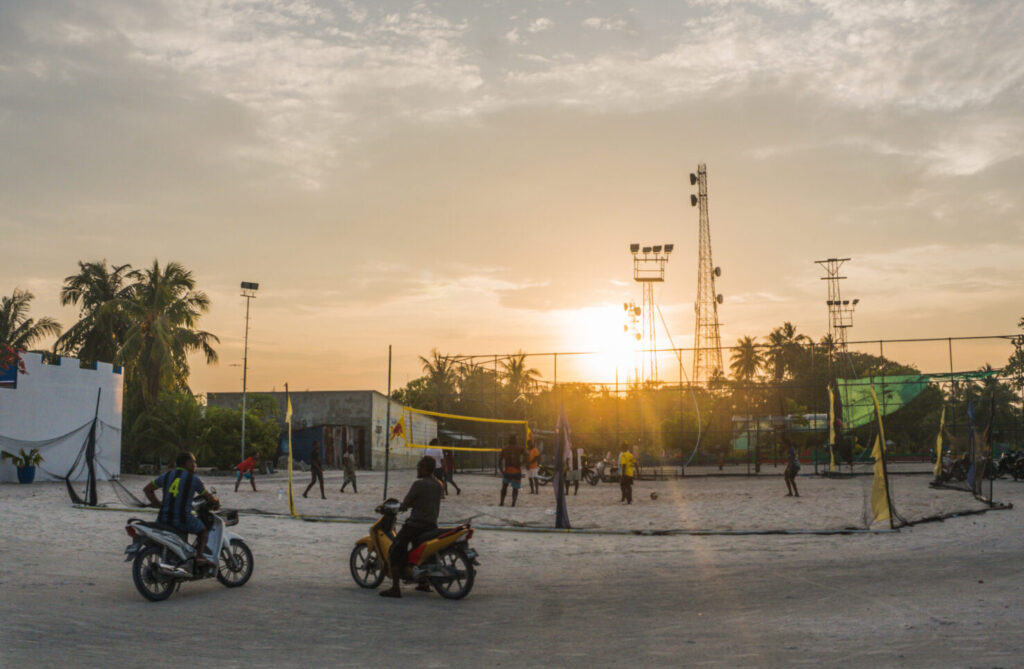
Communities Gain a Role
Horsburgh Atoll is emerging as a beacon for sustainable tourism development, thanks to its rich biodiversity and the dedication of its community. The atoll presents a unique opportunity to blend conservation with tourism, creating a model for responsible travel. Back in 2011, the United Nations recognized the exceptional natural value of this region by designating Baa Atoll as a UNESCO Biosphere Reserve. This honorable status protects the northern part of Goidhoo. The area is home to the highest biodiversity and the largest mangrove forest in Baa Atoll. It also acts as a popular roosting site for various migratory bird species.
Additionally, there’s a fresh wave of opportunity in the Maldives, riding on the crest of community-based tourism that capitalizes on an already thriving network of guesthouses.
Yet Horsburgh’s traditional island councils were skeptical. Guesthouse tourism facilitates greater access to more affordable travel for more visitors, but increasing visitor numbers also result in greater resource use in islands that often do not have access to fresh water or waste management centers. Additionally, locals in the Horsburgh Atoll discussed challenges in educating guests about Muslim beliefs or appropriate dress, increasing potential for cultural conflicts with guests accustomed to resort-style travel.
Horsburgh Atoll communities addressed these challenges by creating a common forum to discuss them with HATA. That paved the way for a revolutionary collaboration, as HATA invited public sector partners to join them. For the first time, three island councils have come together in a united forum to chart the future of sustainable tourism development in the atoll. At a management meeting in April 2024, HATA Coordinator and atoll resident Rayya Hussain noted: “This is the first time in the years I have lived here where I have seen all three of the Island Councils in the atoll sitting together in a public forum and discussing common issues. The council members also said this is the first time they are seeing real community benefits from a development project.”
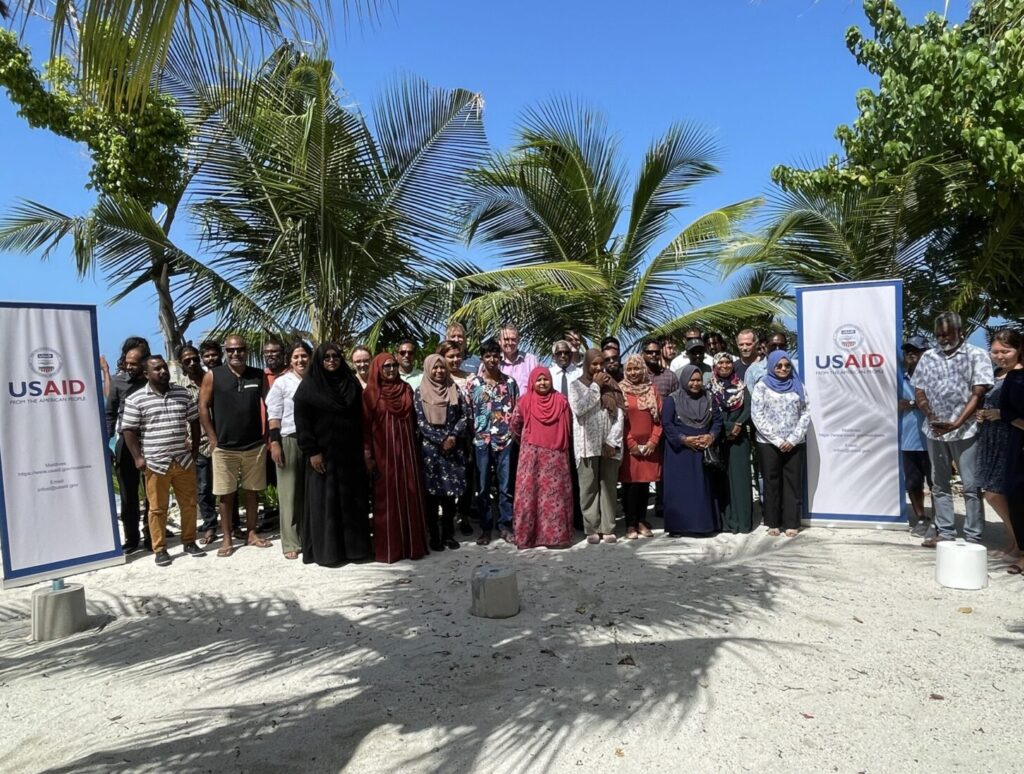
This alliance serves as a powerful engine for local engagement and ensures that the economic benefits of tourism are spread more equitably among residents. By fostering a sense of ownership and active participation in the tourism sector, this initiative aims to transform the way tourists experience the Maldives, and how Maldivians themselves benefit from their country’s tourism sector.
In June 2023, HATA held a workshop with the community to address common challenges and to create a shared vision and identify strategic approaches for achieving a resilient destination. The collaboration between HATA, USAID, Solimar, key stakeholders, and local communities yielded the Sustainable Tourism Destination Management Plan, outlining everything from future mangrove restoration efforts to visitor education campaigns. The sections below present the strategies HATA will be employing.
Governance, Decentralization, and Collaborative Management
Over the past decade, the Maldives has tried to give local councils and governments more control over managing natural resources. However, this process has faced many challenges. Local councils and authorities still lack significant control and access to these resources, while there are no formal mechanisms that promote the collaboration between the public and private sectors.
Additionally, several public, private, and non-governmental organizations operate within the Atoll, but they lack coordination and often are unaware of each other’s projects. Local Councils and Women’s Development Committees (WDCs) have little power over tourism matters, while tourism actors work independently from these formal organizations. This lack of coordination limits power-sharing and co-management, weakening overall destination resilience.
To enhance governance and ensure effective management of tourism, HATA proposes defining clear roles for local councils and stakeholders to streamline decision-making and foster collaboration among tour operators, NGOs, and community members to share best practices. Additionally, implementing regulations on building height, waste management, and environmental conservation will help preserve the atoll’s natural beauty.
Addressing Ecological Challenges and Sustainability
Despite Horsburgh Atoll’s untapped beauty and biodiversity, it faces challenges that threaten the atoll’s ecological sustainability. Projections show that by 2100, rising sea levels will submerge 1,190 islands across the Maldives. Additionally, rising ocean temperatures result in coral bleaching, posing existential threats to livelihoods, land, and resources.
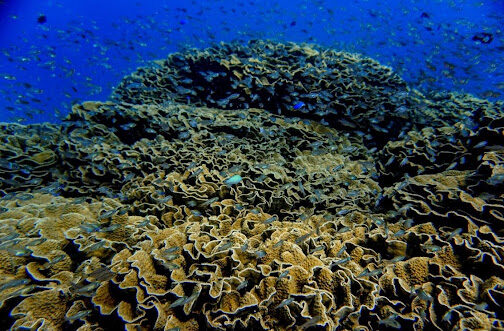
Coastal erosion and waste management stand out as pressing concerns. A lack of consensus on responsibility for cleanliness and waste management has led to tensions between tour operators and community members. Furthermore, many households and guesthouses dispose of food waste in the water or near beaches, where it often washes ashore, exacerbating the problem.
Biodiversity is crucial for maintaining healthy ecosystems and providing essential services for human well-being. In the Maldives, biodiversity underpins the economy, especially through tourism, which relies heavily on natural attractions like coral reefs. However, reef biodiversity is declining, with coral bleaching posing a significant threat. This decline worries tourism operators, who fear losing key attractions.
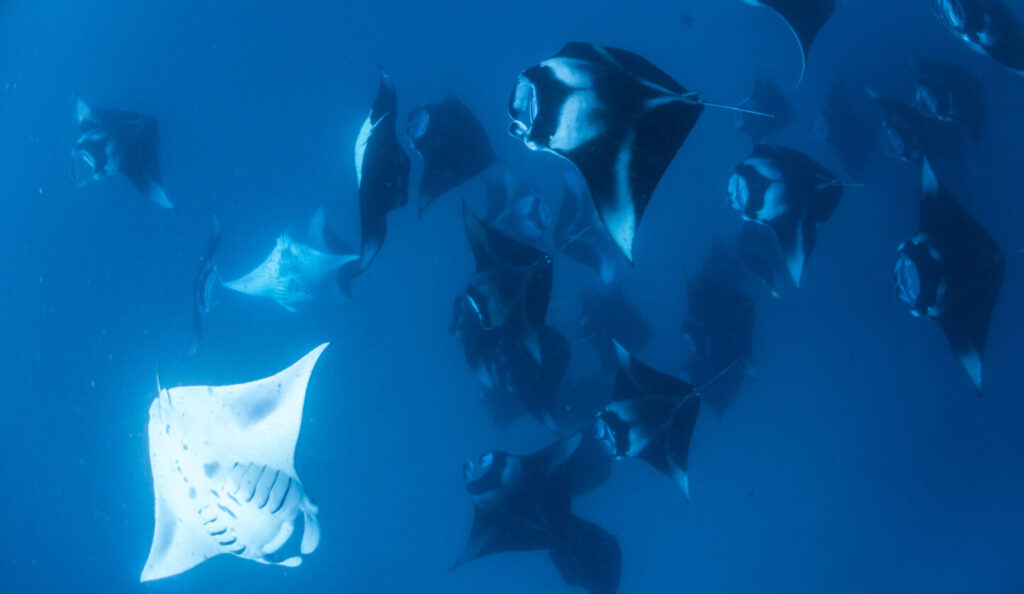
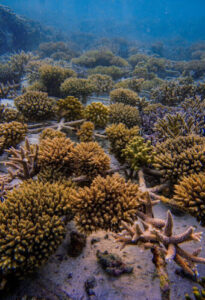
Balancing Infrastructure Development and Ecological Resilience
Horsburgh Atoll’s land use includes community facilities, recreational areas, industrial zones, agricultural lands, and waste management facilities. However, the uncertainty surrounding future tourism development poses significant challenges. Many guesthouses lack proper water, sewage, and waste disposal systems, leading to ecological impacts like untreated sewage being piped directly into the sea.
While new roads and jetties aren’t seen as high priorities, there’s a strong need for improved transportation infrastructure between islands, with only one speed boat company currently operating. Affordable energy access is another obstacle, with high electricity costs due to the absence of a national grid and reliance on imported fossil fuels. Guesthouses also face additional financial burdens with higher business rates for electricity.
Most of the new infrastructure development focuses on building guesthouses. Despite this, both tourism operators and community members prefer keeping infrastructure development at a low level to preserve the Atoll’s pristine environment. Balancing the need for proper infrastructure with ecological protection is crucial for ensuring sustainable growth and maintaining the Atoll’s natural beauty.
To address these challenges, HATA is planning to pool its resources to invest in more transportation options for the islands, better coordinating its efforts to improve access. Recently, a seaplane service began frequenting the atoll in a positive step forward for HATA members and guests. Looking ahead, HATA plans to promote cooperation among tour operators and transportation providers to create affordable travel options.
Engaging Communities in Tourism Development
Among the many challenges discussed during the Sustainable Tourism Management Planning Workshop, community engagement in tourism was the most prominent. Increased community involvement was a priority for many stakeholders. Historically, however, business operators found it difficult to find and retain qualified staff for tourism operations. A standout example is HATA member Island Luxury in Fulhadhoo, which successfully provided tourism-related training to over 30 locals in the islands. This commitment to community inclusiveness won them awards at the Maldives Tourism Awards 2022. This model has the potential to be shared with other HATA members.
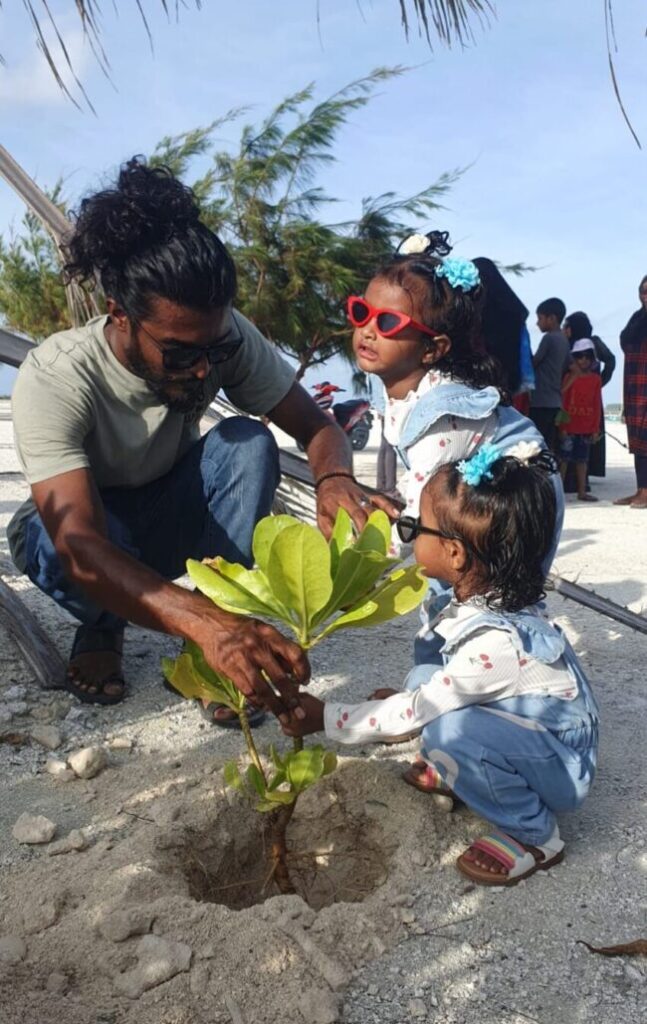
Another challenge is the self-sufficiency of guesthouses in restricting local food provision to guests, as reported by Women’s Development Committee (WDC) members from Fulhadhoo. The tourism experience for most visitors, consequently, revolves solely around guesthouses, providing minimal opportunities for non-tourism community members to reap benefits from the sector. A community member aptly termed this situation a “hangover” from the “one island, one resort” tourism model.
HATA aims to open collaboration in tourism to community members both directly and indirectly. Directly, they will enable training opportunities to be tour guides, guesthouse staff, activity providers, and more; WDC members also plan to revive traditional weaving practices as guest experiences. Indirectly, any community member can become a member of HATA, buying into the cooperative and ensuring that they have a say in decision making while gaining direct financial dividends from tourism. Other HATA strategies include promoting the use of local products and services to boost community revenue, and organizing cultural events and establishing museum spaces to showcase Horsburgh Atoll’s heritage and traditions.
Conclusions and Lessons Learned
HATA has become the first community-led Destination Management Organization in the Maldives, setting a new standard for sustainable and inclusive tourism development. When HATA formally organized and invited the local councils to participate in the tourism sector, it initiated a way for the community to have a direct voice in shaping tourism initiatives.
While the project is still in its infancy, a lot of hard work was put into developing the organizational structure and the guiding Sustainable Tourism Destination Management Plan. Through the power of collaboration with the public sector, the private sector, the community, and international entities, the Horsburgh Atoll Tourism Alliance was able to create innovative strategies intended to transform the atoll into a resilient destination.
Consultants Shannon McCarthy and Chloe King performed this work for Solimar, with major help from HATA Coordinator Rayya Hussain.

